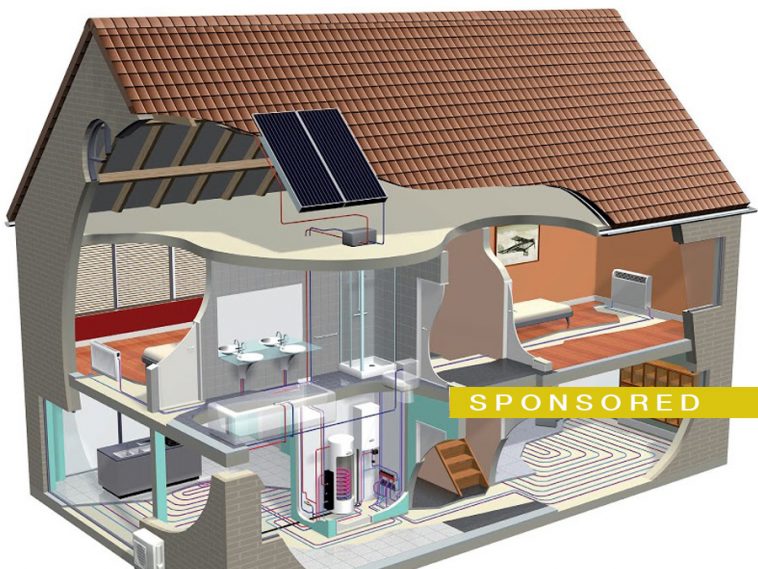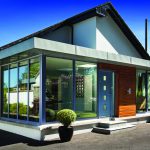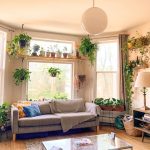Correct installation and your choice of system are some of the factors that will determine the efficiency of your heat pump.
In this article we cover:
- Split versus monobloc systems
- Efficiency and cost of split and monobloc
- Optimal installation parameters for air source heat pump units outdoors
- How to conceal the outside unit
For energy efficiency, first comes the choice of a split or monoblock air to water heat pump.
Monobloc systems
Monobloc combines all components in one outdoor unit so the installer runs the flow and return water pipes to and from it. The simple set up makes it easier for a plumber to install but there are some downsides, the major one being efficiency.
Water in the pipes will freeze in the case of a sub-zero outdoor temperature and a power cut; an unlikely event but one that has to be planned for.
Oftentimes an anti-freeze agent (glycol) is added to the water as a means of protection but this reduces efficiency, up to 30 per cent in a worst case scenario. Instead of adding glycol, you can have a system that discharges the water if there’s an outage.
Shown below is the Daikin monobloc Alterma 3 M.
Split systems
The split system consists of an outdoor and an indoor unit. The outdoor unit is smaller in size than the monoblock and you have refrigerant, instead of water, piped indoors to the heat exchanger which is wall or floor mounted. You can have the outdoor unit up to 30m away but the installation does require a plumber who is F-gas certified.
Another benefit of the split system is that you are creating hot water where you need it: indoors which reduces the risk of heat loss through pipework. Overall though, split systems do tend to be a little bit pricier than monoblock. But because it is pre-plumbed installation can be quicker.
Heat pump installation
In all cases there needs to be enough of an airflow going through the outdoor unit to work to its highest efficiency.
So if you don’t like the look of your unit at the back or side of the house, you could camouflage it with proprietary stickers. If you want to physically screen it off, make sure there’s enough distance between it and the unit; check the manufacturer’s guidelines but roughly allow 2m.
As for distance between the wall of the house and the unit, again it depends on the manufacturer but you usually need to give it 250mm.
Very important too is for the unit to be off the ground, to prevent debris build up at the bottom and to prevent the unit from freezing in very cold ground conditions. Also remember not to place your bins right in front of the outdoor unit!














